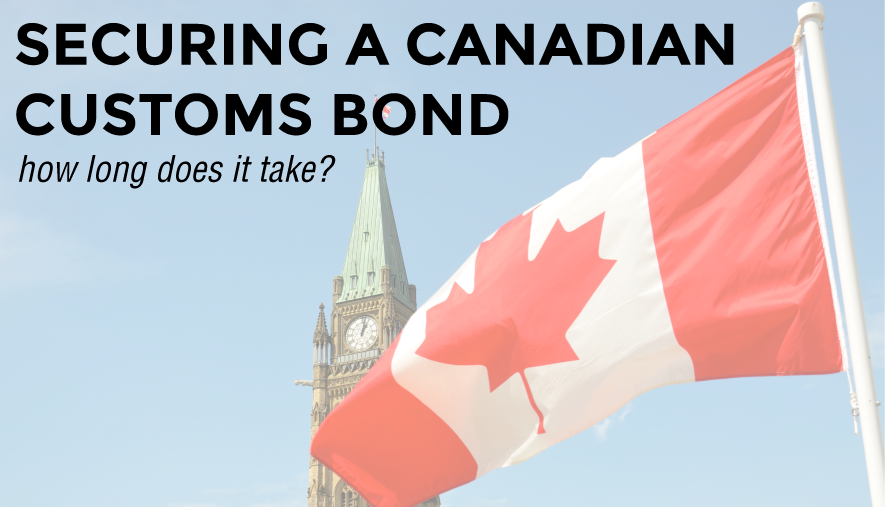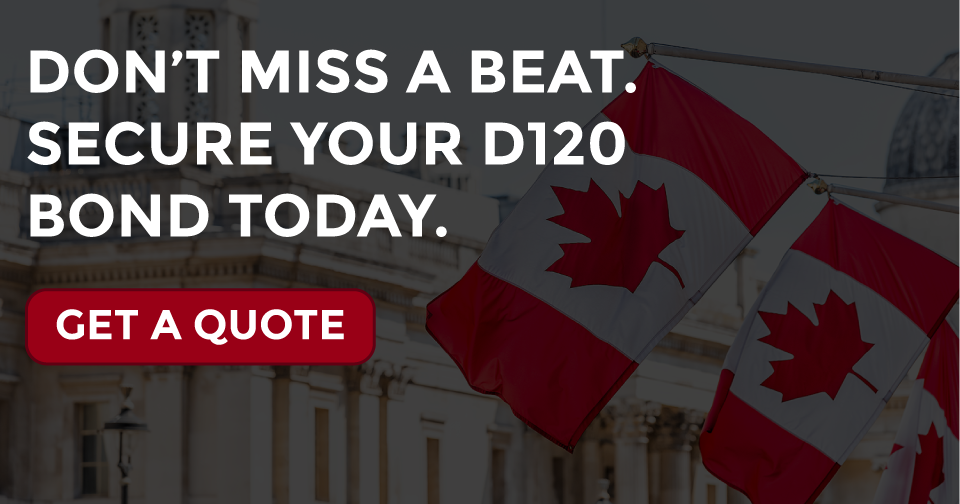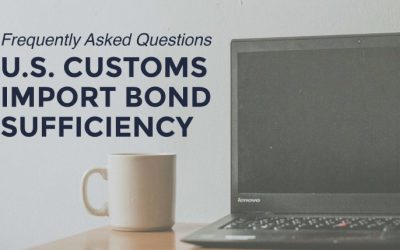As the deadline for CARM approaches, Canadian Importers need to get their Canadian Customs Bond in place to be able to continue their normal import functions.
As January continues to move toward February, many importers that bring goods into Canada continue to wonder when CARM Release 2 will be enforced. So far Canadian Customs has said ‘Spring 2022’, but no specific date or month has been named. However, with this general deadline looming, now is the time to prepare and make sure nothing will interrupt your importing process.
If you import into Canada and have not secured your own Canadian Customs Bond (also known as the Release of Goods Bond) by the deadline set by CBSA, you will not be able to participate in the Release Prior to Payment (RPP) privilege. This means that you will have to fully pay your duties to CBSA prior to them releasing your goods from their custody. For more info on this bond, read our previous post on the topic.
How Long Does it Take to Secure a Canadian Customs Bond
If you are familiar with importing goods into the United States, you know that a U.S. Customs Bond can be placed and be ready to use within a few days once you have contacted a surety. In the U.S. that process has been expedited after years of refinement and digital systems that have been developed. While that system is still not perfect, it is quick and can be fully completed digitally.
This is not yet the case for securing a Canadian Customs Bond. The changes and modernization that are being released through CARM are new and the Canada Border and Services Agency (CBSA) is still working on the systems they will need to have in place in the future. For importers trying to prepare, this translates into slower, manual processes.
At this time, CBSA does not have an online portal for importers or sureties to secure a Canadian Customs bond (also known as a Release of Goods bond). That means that the application and approval for the Release of Goods bond has to be done via paper documents and courier delivery. For many importers this process has been slow and cumbersome with approval from CBSA taking up to 6 to 8 weeks.
The Timeline for Securing a Canadian Customs Bond
The following is a small peek into what the process of placing a Canadian Customs Bond can look like:
- Contact a Surety to begin the process
- Fill out an application for a Release of Goods Bond with the help of your selected Surety
At this time, importers are required to submit a copy of their financials in order to place this bond. - Once the application is approved, the importer will be sent a copy of their bond and a link to submit payment
- The physical copy of the bond must be sent to CBSA
- Once CBSA has received the physical copy of the bond, they must look it over and approve it on their end
At TRG, we have heard from importers that this approval from CBSA can take up to 6 to 8 weeks. - The importer will receive a physical document back from CBSA stamped “Approved”
- The importer can now move forward with using their own Release of Goods Bond
As a quick reminder, every surety is going to have a slightly different process when it comes to placing a Canadian Customs bond so the steps above are meant to be a general overview of what steps could be required. However, the common feedback has been that this is a slow, manual process.
Important Takeaways About Canadian Customs Bonds
What we do know for sure is that if you import into Canada, you will need your own Canadian Customs bond. If you do not secure one, your importing practices may be disrupted. We also know that placing this bond is not an overnight process. Therefore, the best course of action is to start the process early and secure your bond prior to the CARM release 2 date.
The first step to getting this done is reaching out to a surety that can place the bond. Here at TRG, we are helping importers navigate this process as painlessly as possible. If you need help, fill out our contact form to get in touch with an expert today.






![[Webinar] How Could Changes to De Minimis Impact Your Company?](https://traderiskguaranty.com/trgpeak/wp-content/uploads/2025/05/trg-how-de-minimis-impacts-customs-bond-webinar-400x250.png)
